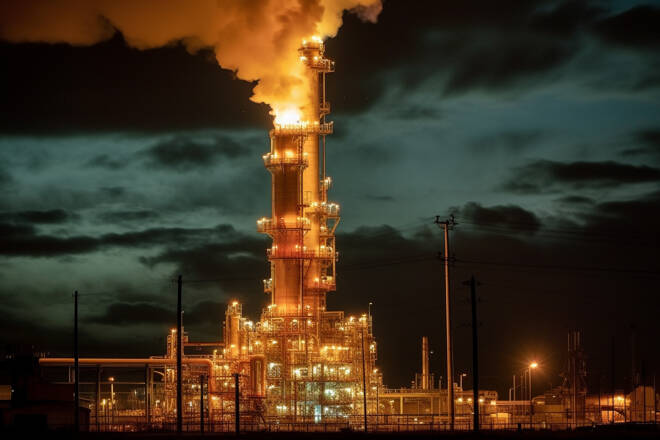Advertisement
Advertisement
Potential Supply Shocks Threaten Natural Gas Prices This Winter
By:
Australia's potential strikes and the looming heating season escalate global gas supply challenges for Winter 2023-2024.
In this article:
Highlights
- Australian strikes may disrupt global gas supply.
- U.S. LNG exports at risk due to hurricane season.
- Winter gas prices expected to surge amidst supply pressures.
Bullish Tides for Natural Gas This Winter
As summer heatwaves blaze through regions like Texas, those in the natural gas sector are already setting their sights on winter supply dynamics. Several recent events hint at a bullish trend for natural gas prices in the winter of 2023-2024.
Global Supply Disruptions
Australia, a significant global producer, is currently in the limelight due to potential strikes that may disrupt the natural gas supply. These strikes arise from disputes about pay and conditions at major Australian plants, including those owned by Chevron Corp. and Woodside Energy Group Ltd., according to Reuters.
Remarkably, these two giants account for over 10% of global liquefied natural gas supplies. With labor unions in continued negotiations, prolonged plant closures could significantly upset the balance of global supplies.
Heightened Demand Anticipation
Despite the subdued demand for gas in the northern hemisphere, the looming heating season and the prospect of disrupted supplies have already sent wholesale gas prices climbing. These hikes are further exacerbated by the extreme weather events experienced this summer and setbacks among other major producers.
U.S. in the Spotlight
With the Australian supply situation turning dicey, all eyes will turn to the US, the world’s largest and most flexible supplier of LNG. But there’s a catch. The ongoing Atlantic hurricane season, which threatens the US Gulf Coast – home to a concentration of US LNG exporters – is a significant concern. As ocean temperatures rise, US forecasters predict an unusually active Atlantic hurricane season, which may disrupt LNG exports.
Market Constraints
Should the Australian supply disruption stretch into September, global supplies would be directly impacted right before the heating season. Such a scenario would mean a spike in prices in both Asia and Europe. In an already tight LNG market, this could push price indices even higher, with regional markets vying for limited supplies.
Global Dependencies
A potential month-long strike at Australia’s key LNG plants could remove about 44 cargoes of LNG from the market, according to Bloomberg. This is of particular concern for countries like Japan, Thailand, and Taiwan, which rely heavily on these supplies. These facilities also account for a significant portion of China’s and Singapore’s imports. With their regular suppliers in jeopardy, these countries may be forced to tap into the spot markets, further driving prices up.
Compounding Supply Pressures
According to Bloomberg, supplies from other regions are also facing challenges. Russian LNG exports have dwindled due to maintenance, while Trinidad & Tobago and Egypt face their own sets of issues, further constricting global supplies. Additional scheduled maintenance, including at Australia’s Prelude, is slated for the third quarter.
Impact on Consumers and Industries
The culmination of these factors spells volatility for natural gas prices this winter. Households, as well as large-scale gas consumers like steel, fertilizer, and ceramic industries, could brace for higher bills, reminiscent of last year’s price surge.
Conclusion
Considering the myriad of challenges and uncertainties plaguing the natural gas market, it seems almost inevitable that prices will surge in the winter of 2023-2024. The global tug of war for limited supplies, combined with potential supply disruptions, places natural gas at the forefront of economic concerns this coming winter.
About the Author
James Hyerczykauthor
James is a Florida-based technical analyst, market researcher, educator and trader with 35+ years of experience. He is an expert in the area of patterns, price and time analysis as it applies to futures, Forex, and stocks.
Latest news and analysis
Advertisement
